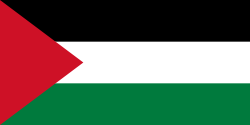Over 54 Killed in Intensified Airstrikes on Khan Younis, Gaza
 Palestinia
PalestiniaOn February 1, 2025, the Rafah border crossing between Gaza and Egypt reopened, enabling the evacuation of 50 Palestinian patients for medical treatment, according to Hamas-run Gaza's health ministry. The crossing had been closed since May due to Israeli control over the Palestinian side. The reopening is part of a ceasefire deal that also facilitated a prisoner swap agreement between Israel and Hamas.
Muhammad Zaqout, director of Gaza hospitals, noted that the 50 patients included severe cases, such as a child with an autoimmune disease, expressing hope that more transfers will follow. He reported approximately 6,000 cases awaiting treatment and over 12,000 additional patients in urgent need.
EU foreign policy chief Kaja Kallas confirmed the deployment of a monitoring mission at the Rafah crossing, established at the request of both Israeli and Palestinian authorities, to assist border personnel and ease medical evacuations. This development coincides with the fourth prisoner exchange under the current truce, with Hamas releasing three Israeli hostages in exchange for over 180 Palestinian detainees.
 Palestinia
Palestinia Palestinia
Palestinia Palestinia
Palestinia